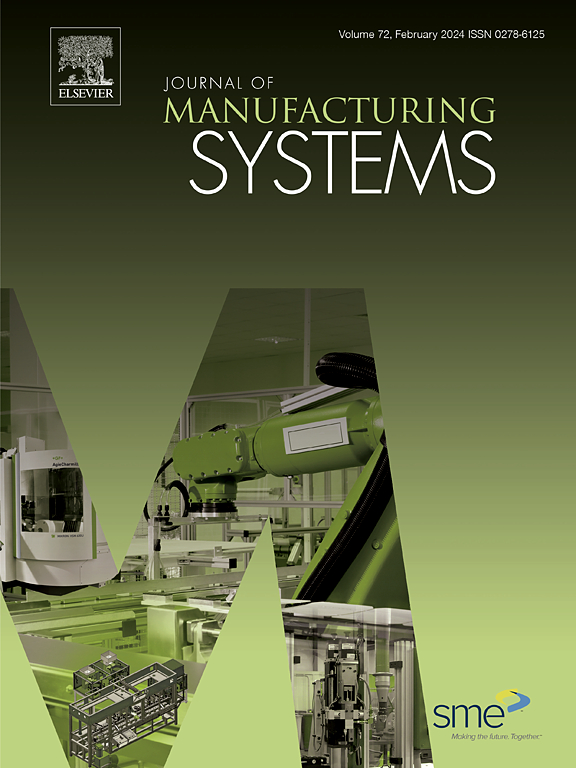用于电池组组装预测分析的机器学习增强数字双胞胎
IF 14.2
1区 工程技术
Q1 ENGINEERING, INDUSTRIAL
引用次数: 0
摘要
电动汽车(EV)市场正在快速增长,电池模块在这一转型中发挥着核心作用。然而,由于多阶段工艺的复杂性和限制整体效率的瓶颈,优化电池模块组装的生产吞吐量具有挑战性。传统的解决方案,如直接车间调整、仿真模型和数字孪生(DT),可能成本高昂且可扩展性较差。本研究提出了一个数字孪生代理(DTS)模型,集成了机器学习技术——线性回归、支持向量回归、k近邻、随机森林回归、深度神经网络、XGBoost和长短期记忆网络——来估计吞吐量并预测未来的机器状态。还研究了数据集大小和聚合方法对模型性能的影响,为车间经理提供了生产线变化如何影响吞吐量的见解。本文章由计算机程序翻译,如有差异,请以英文原文为准。
Machine learning-enhanced digital twins for predictive analytics in battery pack assembly
The electric vehicle (EV) market is rapidly growing, with battery modules playing a central role in this transformation. However, optimizing production throughput in battery module assembly is challenging due to the complexity of multi-stage processes and bottlenecks that limit overall efficiency. Traditional solutions, such as direct shop floor adjustments, simulation models, and digital twins (DT), can be costly and less scalable. This study proposes a digital twin surrogate (DTS) model, integrating machine learning techniques—Linear Regression, Support Vector Regression, K-Nearest Neighbors, Random Forest Regression, Deep Neural Networks, XGBoost, and Long Short-Term Memory networks—to estimate throughput and predict future machine states. The impact of dataset size and aggregation methods on model performance is also examined, providing shop managers with insights into how production line variations affect throughput.
求助全文
通过发布文献求助,成功后即可免费获取论文全文。
去求助
来源期刊

Journal of Manufacturing Systems
工程技术-工程:工业
CiteScore
23.30
自引率
13.20%
发文量
216
审稿时长
25 days
期刊介绍:
The Journal of Manufacturing Systems is dedicated to showcasing cutting-edge fundamental and applied research in manufacturing at the systems level. Encompassing products, equipment, people, information, control, and support functions, manufacturing systems play a pivotal role in the economical and competitive development, production, delivery, and total lifecycle of products, meeting market and societal needs.
With a commitment to publishing archival scholarly literature, the journal strives to advance the state of the art in manufacturing systems and foster innovation in crafting efficient, robust, and sustainable manufacturing systems. The focus extends from equipment-level considerations to the broader scope of the extended enterprise. The Journal welcomes research addressing challenges across various scales, including nano, micro, and macro-scale manufacturing, and spanning diverse sectors such as aerospace, automotive, energy, and medical device manufacturing.
 求助内容:
求助内容: 应助结果提醒方式:
应助结果提醒方式:


